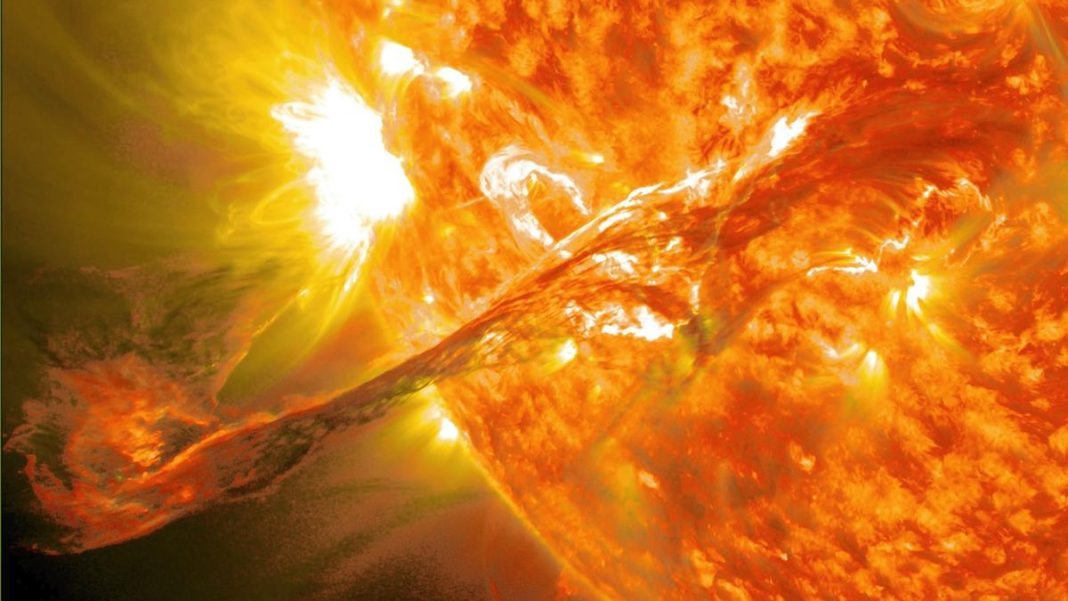Astronomers Detect First-Ever Coronal Mass Ejection on Distant Star
For the first time, astronomers have detected a powerful coronal mass ejection from a star beyond our solar system. The violent stellar explosion was at least 10,000 times more powerful than any solar storm recorded on our sun and could strip away the atmospheres of nearby planets.
Key Findings
- First detection of a coronal mass ejection on another star
- Explosion was 10,000 times more violent than solar storms
- Originated from red dwarf star StKM 1-1262, 133 light-years away
- Lasted only one minute but had devastating potential
The breakthrough discovery, published in Nature, was made by an international team using Europe’s LOFAR telescope network. While astronomers typically use LOFAR to study black holes and other cosmic phenomena, they developed a data processing system that also monitored background stars.
“We always have stars in the telescope’s field of view but generally we’re not interested in them,” said Cyril Tasse, Paris Observatory astronomer and study co-author.
In 2022, the team decided to examine “what had been caught in this net,” leading to the discovery of a massive explosion from May 16, 2016. The brief but intense event came from red dwarf StKM 1-1262 and was identified as a coronal mass ejection.
“It’s the first time we have detected one on a star other than our own,” Tasse confirmed.
Implications for Habitable Planets
The discovery has significant implications for the search for habitable exoplanets. Red dwarfs are the most common stars in our galaxy and frequently host Earth-sized planets, but this finding suggests they may be hostile environments for life.
“The first radio detection inaugurates a new era for space weather applied to other star systems,” said Philippe Zarka, research director at the Paris Observatory and study co-author. “This emerging field opens up major perspectives for how the magnetic activity of stars influence the habitability of the planets that surround them.”
Tasse noted that red dwarfs appear to have “much more erratic and violent” behavior than our sun. “The implication is that these stars can be rather inhospitable when it comes to life and exoplanets,” because their powerful storms could destroy planetary atmospheres.
The research marks a milestone in understanding around distant stars and its impact on planetary habitability.




